The Art of Edward Lange Project is now underway at Preservation Long Island and aims to enrich our understanding of late nineteenth-century Long Island using a collection of historic paintings and drawings.
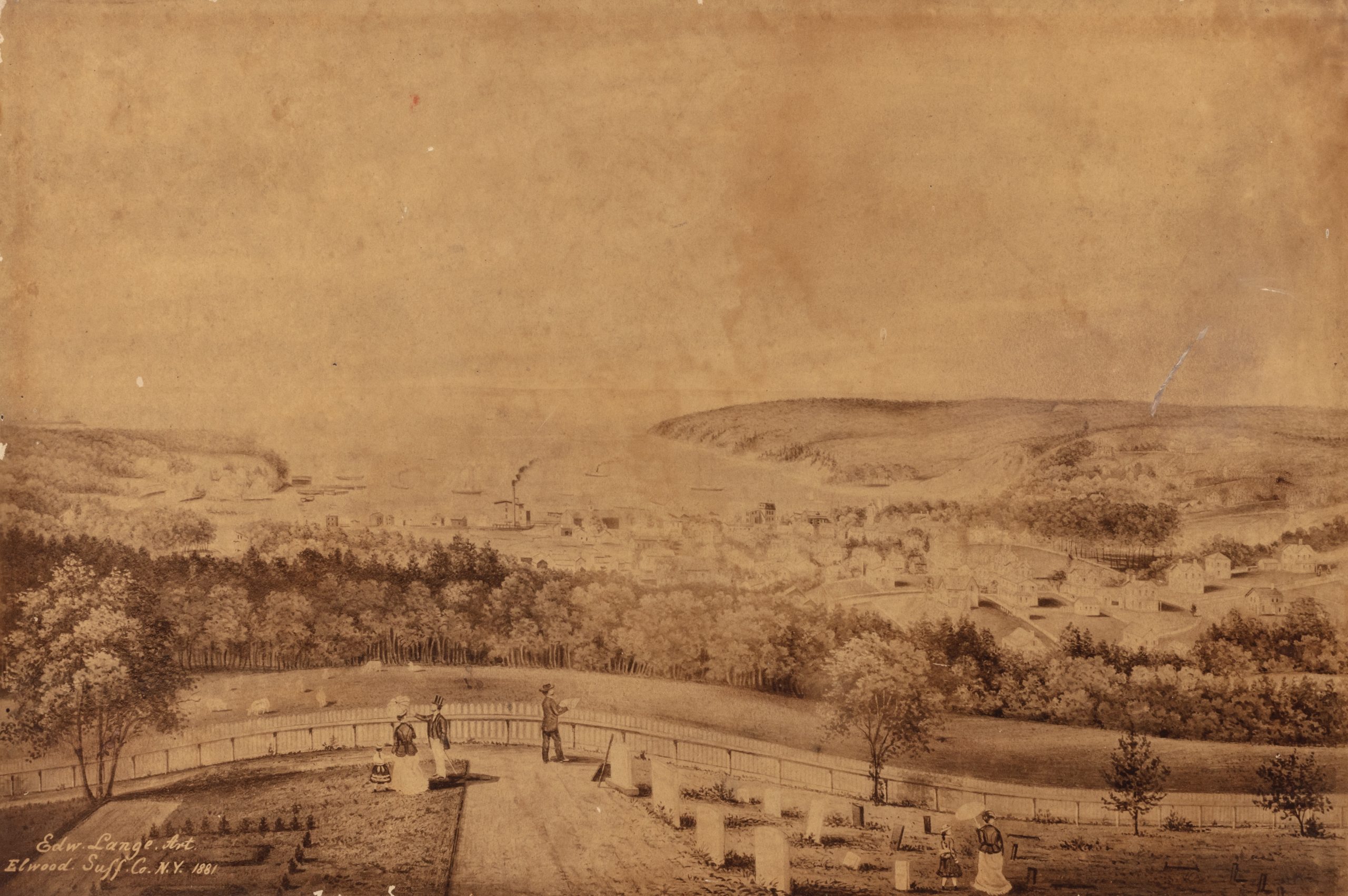
Preservation Long Island has just launched a multi-year project to delve deeper into the artwork of Long Island landscape artist, Edward Lange (1846–1912). While living in Elwood, NY, between 1870 and 1889, Lange painted and sketched homesteads, storefronts, railroad depots, and harbors across Long Island with fastidious care. He was a prolific individual, and like many artists of his time, entertained commissions to depict private residences and businesses in watercolor, gouache, lead pencil, and India ink. Nearly thirty works by the artist, held in the collection of Preservation Long Island, create a kaleidoscopic window into late nineteenth-century Long Island landscapes.
Not only did Lange seem to be constantly producing new work, he also took photographic reproductions of his own pieces to sell en masse. In the Preservation Long Island collection, a photograph of a view he drew of Port Jefferson is one such example. On the back, Lange penned a personal note affirming it was indeed “a photographic copy taken from an India ink drawing by Edward Lange Artist Elwood, Suffolk Co. N. York”. To this, he added that, ‘if any further copies are wanted please address the [artist]”. It is unknown exactly how many of these photographic reproductions Lange distributed. The works in the collection of Preservation Long Island are just a fraction of that which he produced while living on Long Island. Currently, we believe he produced at least one hundred seventy-five unique pieces that are now spread across dozens of public and personal collections. There are almost certainly more that have yet to be rediscovered today.
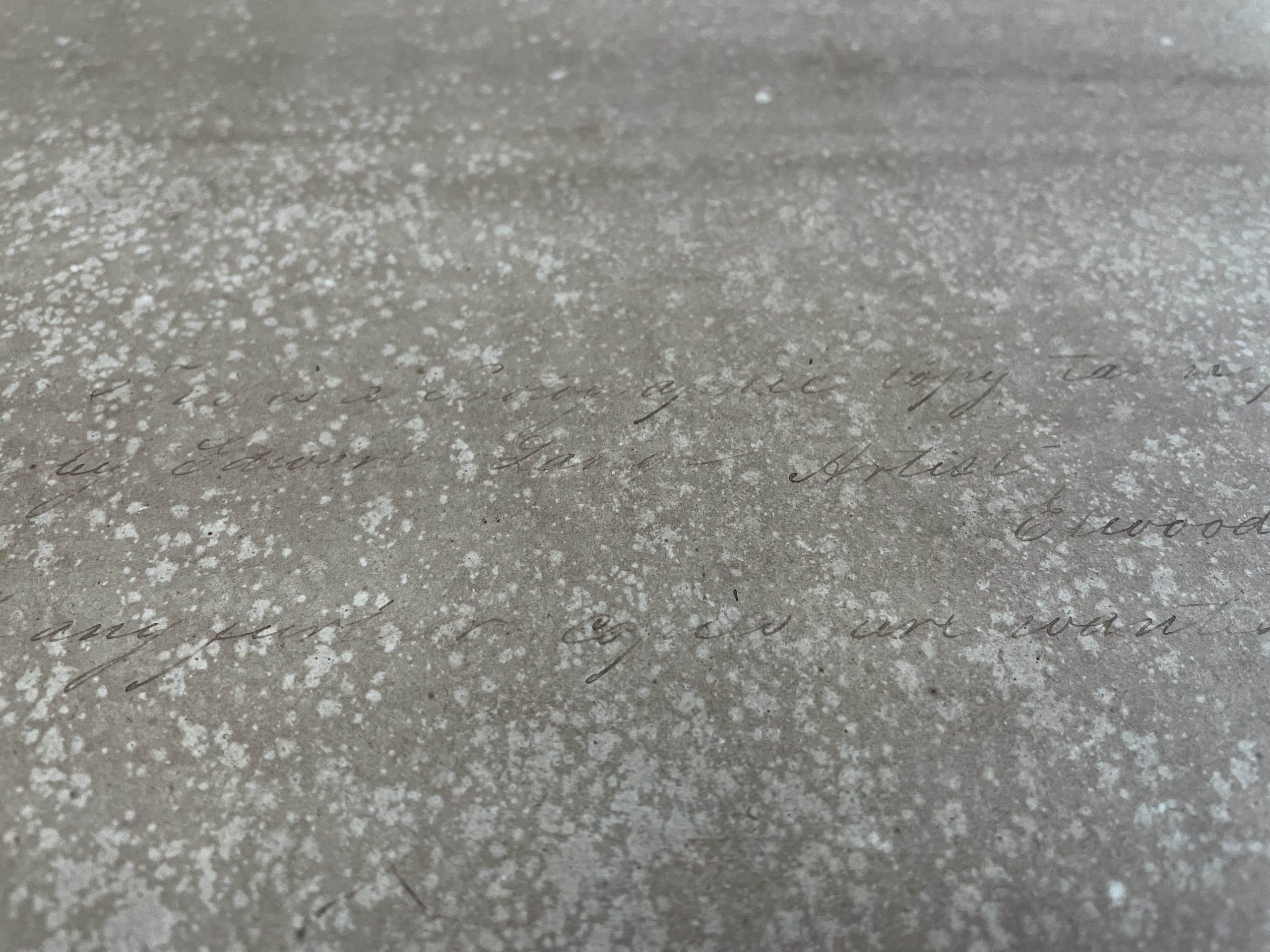
Lange’s artwork represents a tangible connection to a period of Long Island’s history when its people, culture, and landscape were undergoing rapid change. In the later decades of the nineteenth century, steadily increasing populations of Dutch, Scotch, Irish, German, Italian, Polish, and Jewish immigrants permanently altered Long Island’s demographics. Lange himself was a German immigrant. He likely arrived in the United States in 1870, sailing from Bremen, Germany aboard the S.S. Frankfurt. Along with new faces came new industries. Some—such as summer tourism—were spurred on by other artists, like Winslow Homer, who raved about the beauty of the Long Island landscapes he painted himself. Lange capitalized on the thriving tourist market by marketing his own services to hotel and resort owners, offering to illustrate their properties for advertising purposes.

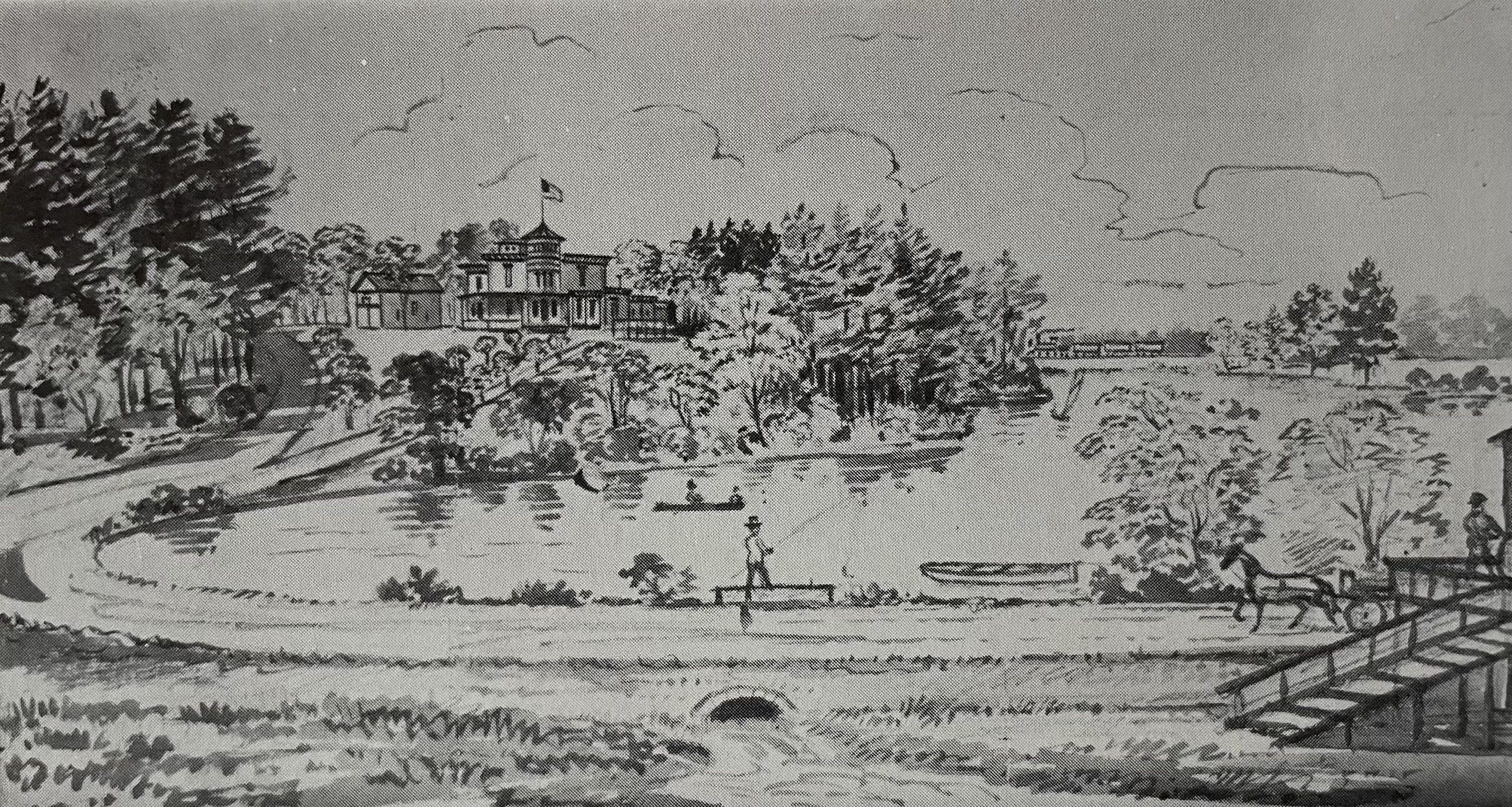
The key to his artistic process was achieving a composition filled with selective detail, highlighting elements of a scene that might otherwise fade to the background or remain out of sight entirely when viewed through the lens of a camera. These details of Lange’s work are some of their most captivating features. In an elevated view across Northport’s Lower Main Street that dates to 1880, for example, Lange paid careful attention to the jewelry shop of Sammis & Oakley. We look past a woman window-shopping and peruse, along with her, their wares of necklaces, pocket watches, and clocks—each face carefully illustrated with the tiniest of clock hands showing the time of day.
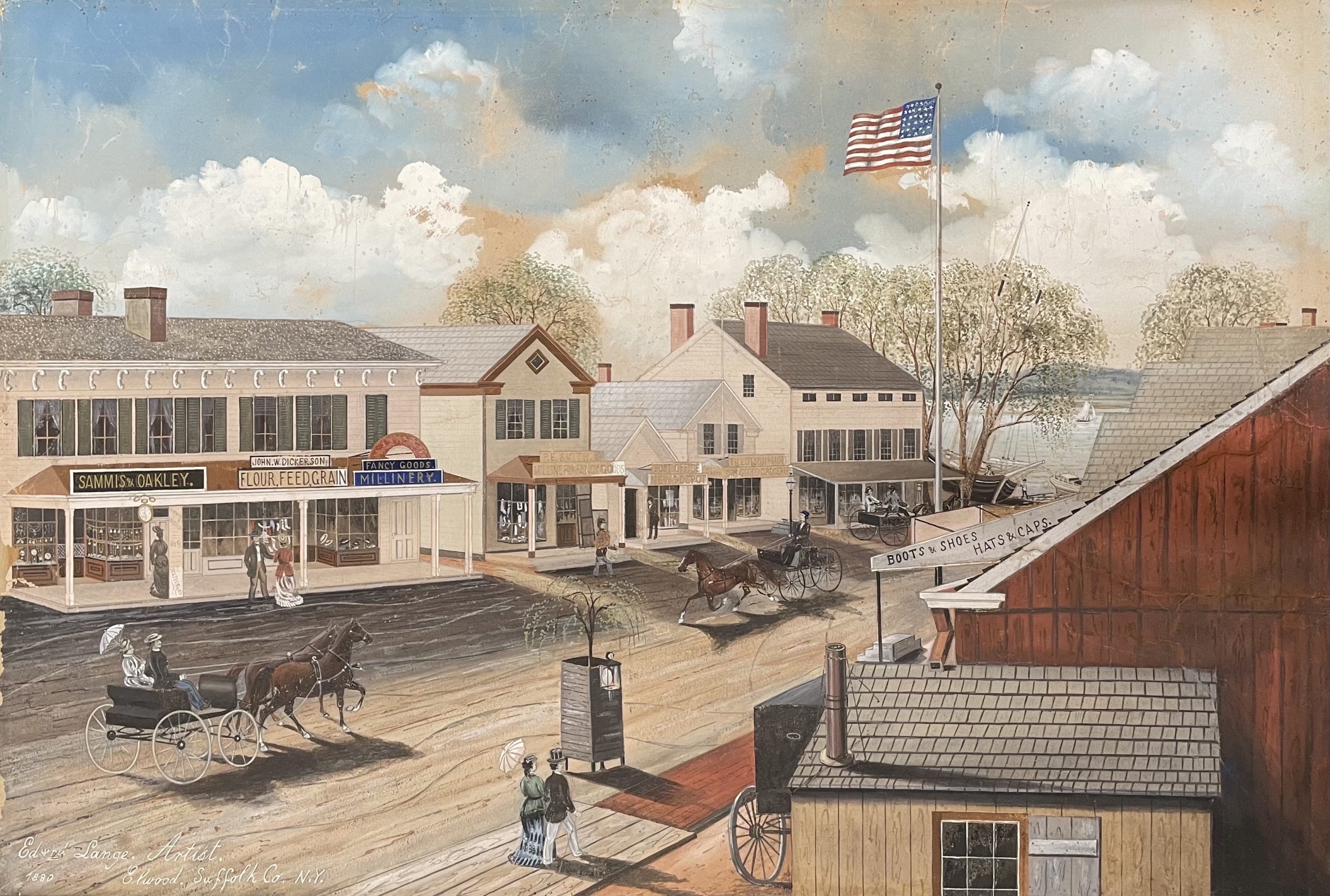
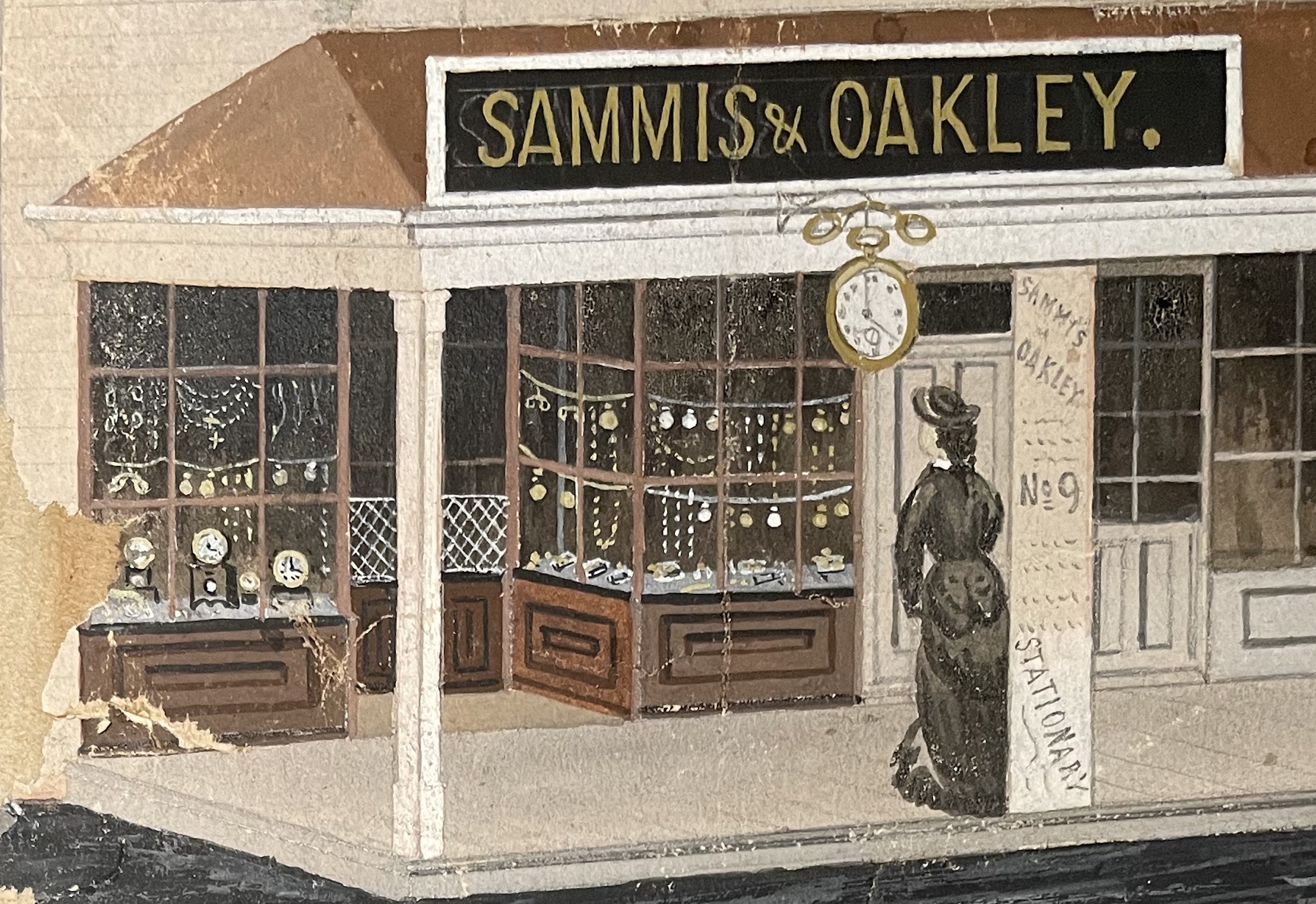
Lange’s work is best understood at this intersection of the general and the specific. He was capable of putting down on paper remarkable vistas and townscapes, while still recording the intimate interactions between people and places that defined the culture of Long Island communities. To our benefit, private and public collections up and down the Island are still the caretakers of Lange’s rich pictorial legacy. Most of his known artworks of Long Island scenery are still located in the very places he depicted throughout Suffolk, Nassau, and Queens County. Over the next year, The Art of Edward Lange Project will result in a digital database and exhibition of Lange’s artwork. These resources will lead to a physical exhibition of Lange’s work at the Long Island Museum, as well as a forthcoming publication. Any further works yet unknown to us are likely still on Long Island. If you know of artwork by Lange in public or personal collections, and would like to share with Preservation Long Island, please feel free to reach out with any information. We eagerly look for more opportunities to see Long Island through the eyes of Edward Lange.
Peter Fedoryk, Curatorial Fellow
[email protected]



